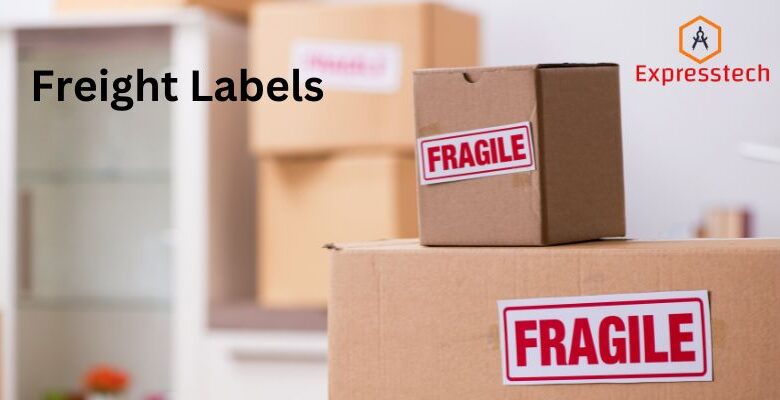Smooth Sailing: How Freight Labels Simplify the Shipping Journey

In the world of e-commerce and global trade, the journey from warehouse to doorstep involves complexities in logistics and coordination. Amidst this intricate web of shipments and deliveries, one often overlooked but essential element stands out: the freight label. These unassuming tags carry more weight than meets the eye, playing a pivotal role in ensuring that packages reach their destinations safely and efficiently. Let’s embark on a journey to explore the significance of freight labels and how they streamline the shipping process from start to finish.
The Foundation of Logistics: Understanding Freight Labels
Before we dive into their role, let’s take a moment to understand what freight labels are and why they matter. At their core, freight labels are adhesive tags affixed to packages, containing key information such as sender and recipient details, tracking numbers, and handling instructions. While they may seem like small pieces of paper, these labels serve as the foundation of logistics, providing vital data that guides packages through the shipping process.
Efficiency in Organization and Sorting
One of the primary functions of freight labels is to facilitate organization and sorting within warehouses and distribution centres. Imagine a bustling facility filled with packages of all shapes and sizes. Without clear labels, chaos would ensue as workers struggle to identify, sort, and route each shipment. Freight labels streamline this process, allowing packages to be quickly scanned, sorted, and dispatched to their respective destinations. This efficiency not only saves time but also minimizes the risk of errors and delays.
Visibility and Transparency for Tracking
In today’s interconnected world, customers expect real-time visibility into the status of their shipments. Shipping labels play a crucial role in meeting this demand by providing tracking information that allows both shippers and recipients to monitor packages throughout their journey. From the moment a label is printed to the final delivery, each scan provides valuable data that helps identify potential issues and ensure timely delivery. This visibility not only enhances customer satisfaction but also builds trust and reliability in the shipping process.
Compliance with Regulations and Requirements
Beyond organization and tracking, freight labels also play a vital role in ensuring compliance with regulations and requirements. Depending on the nature of the shipment and its destination, packages may be subject to various laws and restrictions, such as customs declarations or hazardous materials regulations. Freight labels contain essential information that helps ensure compliance with these regulations, preventing costly fines and delays in transit. By providing clear and accurate documentation, labels facilitate the smooth movement of goods across borders and jurisdictions.
Security and Safety Measures
In addition to regulatory compliance, freight labels also contribute to security and safety measures within the shipping industry. By including handling instructions, special precautions, and security seals, labels help minimize the risk of damage, theft, or tampering during transit. For sensitive or high-value shipments, this added layer of security is essential for protecting both the contents of the package and the integrity of the supply chain. With clear and concise labelling, shippers can rest assured that their goods are in safe hands from warehouse to doorstep.
Enhanced Supply Chain Visibility and Efficiency
Beyond facilitating tracking for customers, freight labels also contribute to enhanced visibility and efficiency throughout the supply chain. By incorporating barcodes or QR codes, labels enable automated scanning and data capture at various checkpoints along the shipping route. This automation reduces reliance on manual data entry, minimizing the risk of errors and expediting the processing of shipments. With real-time updates on package location and status, logistics teams can proactively manage inventory, optimize routing, and identify potential bottlenecks or delays, ensuring a smoother flow of goods from origin to destination.
Facilitating Returns and Reverse Logistics
In the dynamic world of e-commerce, returns and reverse logistics are inevitable. Freight labels play a crucial role in facilitating this process by providing clear instructions and documentation for returning items. Whether it’s a change in size, a defective product, or simply a change of heart, customers rely on freight labels to initiate the return process seamlessly. By including return addresses, RMA (Return Merchandise Authorization) numbers, and other pertinent details, labels streamline the handling of returned merchandise, enabling prompt processing and resolution. This efficiency not only improves the customer experience but also reduces the burden on customer service teams and enhances overall satisfaction.
Customization and Brand Identity
While the primary function of freight labels is to convey essential information, they also present an opportunity for customization and brand identity. Many businesses leverage freight labels as a branding tool, incorporating logos, colours, and designs that reflect their brand aesthetic. By infusing personality into their labels, companies can create a cohesive brand experience that extends from packaging to delivery. Additionally, customized labels can include promotional messages, QR codes linking to special offers, or personalized notes, further engaging customers and fostering brand loyalty. In a competitive marketplace, these subtle touches can make a significant impact on customer perception and retention.
Environmental Sustainability and Eco-Friendly Practices
In an era of heightened environmental awareness, sustainability has become a top priority for many businesses. Freight labels offer an opportunity to promote eco-friendly practices and reduce environmental impact throughout the shipping process. By using recyclable or biodegradable label materials and adopting energy-efficient printing technologies, companies can minimize their carbon footprint and support sustainable packaging initiatives. Additionally, labels can include messaging encouraging recipients to recycle or reuse packaging materials and promoting responsible consumption habits among consumers. By aligning with eco-conscious values, businesses can not only attract environmentally conscious customers but also contribute to positive social and environmental change on a larger scale.
Conclusion:
In conclusion, while they may seem like small pieces of paper, freight labels play a significant role in streamlining the shipping process from start to finish. From organization and tracking to compliance and security, these unassuming tags are the heroes of logistics, guiding packages safely and efficiently from warehouse to doorstep.





